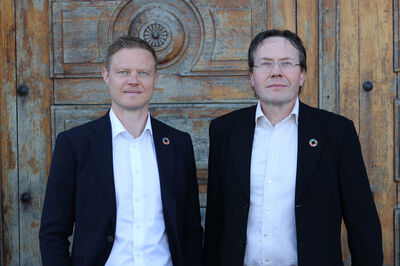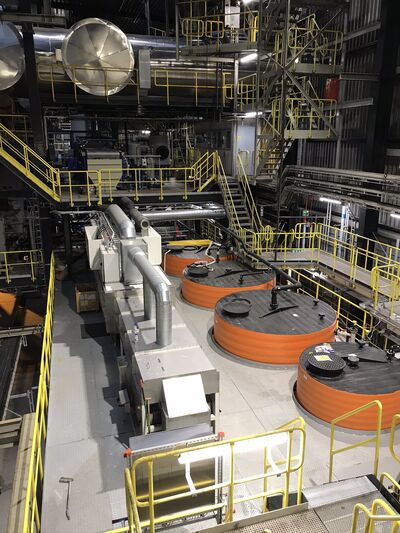Fly ash recycling : Swedish cleantech company treats fly ash for full circularity of waste-to-energy

A circular economy is what we all wish for. That achieving this is not an easy task should be clear by now. It does require some radical thinking, innovation, and most likely restrictions on all of us. But let’s talk about innovation.
What to do with the waste that cannot be recycled? For many, waste-to-energy (WtE) is the best option. To give you some numbers: the 504 WtE facilities in Europe treat 101 million tonnes of residual waste annually. In the US WtE never really took off like in Europe, but the 75 WtE plants treat almost 35 million tonnes of waste per year. There is hope that new policies and incentives both on the state and federal levels might give the industry the push needed to grow.
But even though WtE drastically reduces the amount that needs to be landfilled while generating heat and electricity, there still is some part that needs to be landfilled. Which of course is where circularity ends. So, the industry is not resting on its laurels but instead looking for ways to offer truly circular solutions acknowledging that incineration is not the end of the road.
Like our content? Subscribe to our newsletters!
Bottom ash recycling
The combustion process in Europes WtE plants produces around 20 million tonnes of bottom ash, which is composed of mineral fractions as well as some valuable metal fractions such as aluminium, iron, steel, zinc, and copper. And surprisingly also silver and gold. According to ESWET (European Suppliers of Waste-to-Energy Technology), it would take the residual waste of 650 Europeans to produce one golden ring. Considering all the WtE plants in Europe it would be possible to recover 1.2 million tonnes of iron and 250,000 tonnes of aluminium. And the amount of iron recyclable from European bottom ash equals 26 cruise ships. Impressive, right?
After metal recovery, the mineral part of the ash can be used as a secondary building material. Fortunately, it becomes more and more standard to recycle the bottom ash.
Valuable fly ash
But what about the fly ash? “Fly ash is often simply forgotten”, says Daniel Holm, Sales and Commercial Director at Swedish cleantech company HaloSep. “And so, this very hazardous fraction ends up in special landfills leading to problems in the future.”
“Fly ash truly is the missing link when it comes to circularity in waste to energy”, HaloSep’s president Erik Silfverberg says adding that the company wants to be part of the solution. The company emerged from Stena Metall's R&D department with Erik Rasmussen as the inventor. The Stena Metall Group is a recycler and processor of metals, paper, electronics, hazardous waste, and chemicals.

HaloSep’s technology handles all fractions of fly ash as well as the scrubber liquid – “This is what sets us apart from competitors,” Silfverberg says - resulting in three different value streams, salts, non-hazardous treated fly ash, and metals. The process for achieving this is as follows:
- First, the fly ash is mixed and reacted with the acid scrubber liquid, resulting in the neutralisation of the scrubber effluent. Fly ash particles larger than 1 mm are extracted; they represent less than 1% by weight of the fly ash and are returned to the WtE incinerator.
- Second, the fly ash goes through several precisely controlled leaching and rinsing steps so that a treated fly ash fraction and a salt brine containing dissolved metals is formed. The brine is purified by a multi-stage precipitation process to produce a salt fraction (which meets the EU standard for de-icing, road salt, and dust control agents or can be released in the sea as it does not cause environmental problems). This brine stream can optionally be further treated to generate salt products replacing virgin materials. The treated non-hazardous fly ash fraction is dewatered prior to landfilling or reused as a construction material. And finally, a stream of metal/Zn rich fraction (to be sent for Zn recovery) is generated.
"Our technology is mainly suitable for wet processes but can be adapted for semi-dry and dry processes as well", Silfverberg explains. The technology is scalable and can be implemented in existing plants. “Our aim of course is that fly ash recycling technology is considered when planning new facilities. Regarding the circularity of the sector unfortunately this is not standard yet,” says Holm, who also emphasizes the reduction of long-range transportation costs and emissions. HaloSep’s technology can also be placed at sites where fly ash from smaller plants is consolidated. The process is fully automated allowing full control of all data.

Change is coming
In 2021, the first and so far only facility went into operation in Copenhagen, Denmark. This is a project carried out in cooperation with Vestforbrænding and funded by EU Life and is therefore called Life HaloSep. “The process is running in accordance with the expectations,” Silfverberg says.
At HaloSep's Plant for Optimisation, Research, and Technology (PORT) in Gothenburg, Sweden, the company is working on optimising its processes. The facility also serves to showcase the technology to potential customers with the ability to process the customers fly ash to verify the end result.
The market for the secondary raw materials recovered from fly ash is there. But, as Daniel Holm points out, regulations are not always in place yet: “Equal requirements for virgin and reused materials are needed, taking into account the whole lifecycle perspective. And this is many times forgotten today. So sometimes you end up with stricter requirements for reused materials than for virgin materials. But that is something that we see is changing.”
“I think the timing is right for our technology. Things are changing, quite rapidly I would say,” says Silfverberg. “There is a keen interest in circularity.” And HaloSep wants to be at the forefront of that change.

